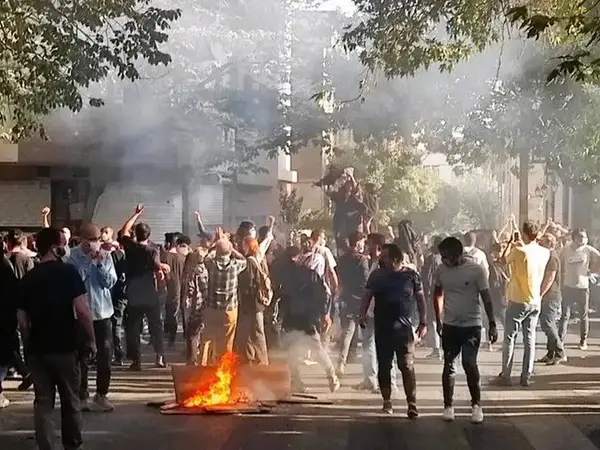Iranians have planned a special protest rally for Saturday, December 31, while many started the protests Friday night, a day the regime sought to portray as a day of pro-government rallies.
Iranians took to the streets Friday afternoon after the regime-sponsored pro-government gatherings ended. The Islamic Republic marked the anniversary of a large rally it organized in 2009 to silence opposition protests questioning the results of the presidential vote that year which reinstated Mahmoud Ahmadinejad for a second term.
But this year the pro-regime gatherings were too small to make dent in the popular mood to continue antigovernment protests.
Several cities big cities were scenes of demonstrations where people gathered to mourn for their loved ones killed in the past three months by security forces. It seemed that people were preparing for a larger protest on Saturday, December 31 in the capital Tehran. Calls on social media have urged people to march on Tehran’s main bazaar at 11:00 local time.
Iranians have been holding regular antigovernment protests against the clerical regime since September demanding an end to clerical rule and despotism and vowing to establish a secular political system.
The recent sharp fall in the value the Iranian currency has added a sense of urgency to intensify the protests, as many see a catastrophic jump in inflation in the coming weeks.
Anonymous grassroots groups have also been formed to organize rallies in different neighborhoods in metropolitans centers.
The grassroot group in Tehran has called for a march from all parts of the capital towards the city’s bazaar, where most of the people influential in the country’s economy have their businesses. This would be the first protest rally that has a single destination, serving as a milestone to the current uprising.
Bazaar or traditional retail market strikes have a deep historical root in Iran and signal a serious political and economic crisis. The bazaar strikes played a major role both in the Constitutional Revolution of the early 20th century and in the 1979 revolution against the monarchy.
The youth of Tehran's neighborhoods called on people to participate in the march towards Tehran's Grand Bazaar, saying, "In this difficult situation, we must stand up to support the merchants."
One of the main factors supporting the Islamic Revolution in 1978 was the support by the big merchants in bazaars, financially supporting the striking workers who added momentum to the protests.
The government has blamed the unrest on demonstrators it says are bent on destruction of public property and are trained and armed by the country's enemies including the United States, Israel and Saudi Arabia.
Separately, a rights group said at least 100 detained protesters in Iran faced possible death sentences.
"At least 100 protesters are currently at risk of execution, death penalty charges or sentences. This is a minimum as most families are under pressure to stay quiet, the real number is believed to be much higher," the Norway-based Iran Human Rights group said on its website.
Iranian courts have so far handed down death sentences in more than a dozen cases based on Islamic law charges such as "warring against God" after convicting protesters of killing or injuring security forces, destroying public property and terrorizing the public.
